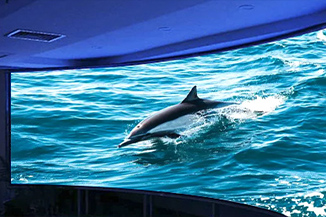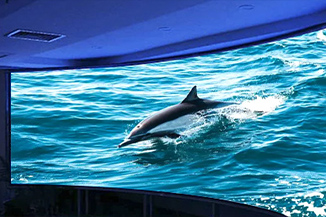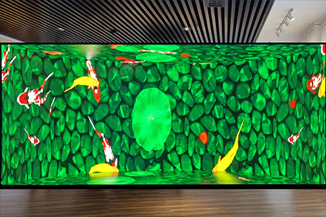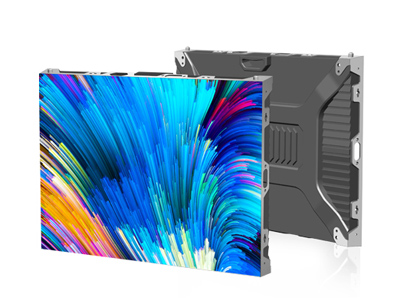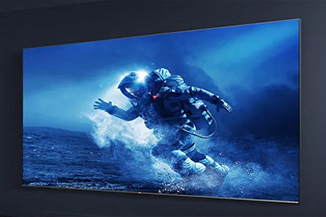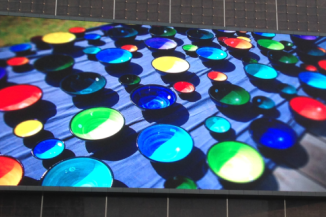Publisher: Supplier of LED Display Time: 2022-02-28 17:09 Views: 1655
With the development of science and technology, LED technology is also developing continuously, bringing various conveniences to our lives, providing us with various life information, and benefiting us human beings. LED color temperature is to change the ratio of different lights. Increase the red light, the color temperature becomes warmer, and increase the blue light, the color temperature becomes colder. Adjust the brightness, change the current flowing through the LED, the higher the current, the brighter it will be. Otherwise, it's darker. The current regulation is achieved by changing the PWM. The so-called PWM is pulse width adjustment. The most fundamental way to adjust the pulse width is to change the value of the resistor and capacitor values that determine its width. The larger the product of RC, the larger the width. The details should be discussed in conjunction with the circuit diagram.
1. Color temperature
The color temperature of the light source is compared to a theoretical thermal blackbody radiator (blackbody for short). The absorptivity of radiant energy of any wavelength is equal to 1 at any temperature. This is the ideal model, also known as the complete radiator) to determine. The spectrum emitted by thermal radiation sources is continuous and smooth. For black bodies, the color will vary at different temperatures. There is a unique correspondence between the color of a black body and its temperature. When representing the color of a light source, it is common to compare the color of the light source to the color of a black body. The color of the light source is considered to be a black body if the color of the light emitted by the light source is the same as the color of the black body at a particular temperature. Colors at this temperature are called "temperature colors," or simply "warm colors." Obviously, "warm color" refers to "color," which is the color of a black body at a certain temperature. However, due to a longstanding convention, this concept is now commonly referred to as "color temperature".
For a thermal radiation source such as an incandescent lamp, since its spectral distribution is relatively close to a black body, its chromaticity coordinate point is basically located on the locus of the black body, and the concept of visible color temperature can properly describe the light color of an incandescent lamp. However, for lamps other than incandescent lamps, the spectral distribution is far from that of a black body. The chromaticity coordinates determined by their relative spectral power distributions at temperature T may not fall exactly on the blackbody temperature locus of the chromaticity diagram, so only the color temperature of the light source can be determined by the color of the light source closest to the blackbody locus, called is the correlated color temperature (CCT).
2. White LED light-emitting principle
White LEDs are the only way to achieve semiconductor lighting. White light LEDs are not monochromatic light, and there is no white light in the visible spectrum. According to people's research on visible light, the white light that the human eye can see can be produced by mixing two or more kinds of light. Currently, there are three ways to obtain white LED light sources.
(1) Blue LED + phosphors of different colors: The white LED developed by Nichia is excited by the blue LED to excite the yellow YAG phosphor coated on it. The yellow light produced by the phosphor is excited, and the original blue light due to the excitation complements the white light. White light can also be obtained by combining green and red light emitted by blue LED chips with phosphors, with better color rendering, but the phosphors used in this method have low conversion efficiency, especially red phosphors. At present, the white LED packaging technology using blue LED and yellow YAG phosphors is relatively mature, but the problems of uniformity, high color temperature and unsatisfactory color rendering index cannot be solved for a long time.
(2) Ultraviolet or violet LED + RGB phosphor: The principle of synthesizing white light with ultraviolet or violet (300~400nm) LED and RGB phosphor is similar to that of fluorescent lamp, but the performance is better than that of fluorescent lamp. The conversion coefficient of purple LED can reach 0.8, and the quantum conversion efficiency of each color phosphor can reach 0.9. (b) The method shown in (b) uses a violet LED to excite three primary or polychromatic phosphors to generate polychromatic light, which is then mixed into white light, with better color rendering, but also has problems. Red phosphors and green phosphors are mainly sulfides, which have poor luminescence stability and greater light decay.
(3) RGB three primary color LEDs form white light: this method is to combine green, red and blue LED chips, as shown in figure (c), turn on the power at the same time, and then press green, red, and emit a certain amount of blue light to connect these Proportionally mixed into white light. The ratio of green, red and blue is usually 6:3:1. The method of directly encapsulating the three primary color LEDs of R.G.B into white LEDs has the best overall white light performance. On the premise of high color rendering index, the white light lumen efficiency is also very high. Since the color temperature and color rendering index required to synthesize white light are different, the requirements for the lumen efficiency of LEDs of each color of synthetic white light are also different. But the main technical problem of this method is to improve the electro-optical conversion efficiency of green LED and reduce the cost.
The above is the relevant knowledge of LED technology. I believe that with the development of science and technology, the future LED lights will become more and more efficient, and the service life will be greatly improved, bringing us greater convenience.

